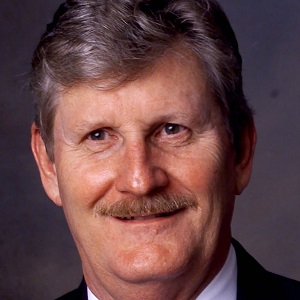What Would You Have Done?

Guest writer Tom Barry is back this week to ask us to consider how we will approach our market and our leads in “What Would You Have Done?”
“Build a better mousetrap and the world will beat a path to your door.” – Ralph Waldo Emerson
However, it is a long and lonely day sitting at your home or office as an order taker waiting for prospective customers to come knocking or calling! Especially, when you realize that customers either purchase logically and support their decision emotionally or purchase emotionally and support their decision logically. Either way, you must be prepared to cover both sides of these motivating drivers! The more you practice, drill, and rehearse… the better the odds of a favorable outcome!
In what follows is a true-life portable mobile cellphone sales presentation story which shares insight of contrasting styles of differentiating value propositions, and the importance of strategy preparation. In our country which now boasts nearly three hundred million handheld cellphones, it is a time warp journey through a level of abstract reasoning for Generation Z to appreciate a past world where there was a need for investment justification for the availability, rental, or ownership of a mobile cellphone. Nevertheless, new technology is always a blink away and so are the strategies and skillsets required to be ready to gently lead prospects to the latest and greatest products in a manner that serves to illuminate clear recognition of existing afflictions/challenges so to desire a new improved reality!
Preamble: By 1985 in the San Francisco, CA Bay Area, the first six (6) cell phone towers were constructed. The TV announcements began with local news coverage that related their completion and soon to come launch of cellphone services. Specifically, the event to showcase the technological event was for five (5) Site Seeing Air Touring Balloons to be launched from remote Bay Area locations. Each group of Balloon travelers were outfitted with a portable cellphone so that the ground-based chase vehicles, also equipped with same, could communicate via their portable mobile phones in order to coordinate the precise wind influenced landing spots for each Air Balloon trek. Timely retrieval, safety, and efficiency were to be showcased! Truth be told, a couple of Air Balloons full of passengers and an experienced pilot crashed and started fires, others landed far off the cellular grid and resultantly, the cellphones did not all perform as anticipated.
Note: Portable Cell Phones at the time ranged in MSRP from…$2,000 to $6,500. There were two models to choose from. The lower priced unit was akin to a car battery with a carry handle and a phone handset with a keypad (approx. weight of 20 lbs.). The higher price unit was a transportable unit that was designed to be installed in a car with the transceiver in the trunk and a portable handheld handset mounted near the dash which could also be detached and carried in a purpose designed suitcase (approx. weight of 8 lbs.). Both units had handsfree speaker capabilities. The limited battery portable life technology of the day required overnight charging for generating just hours of standby or call usage.
The fixed service fee cost to have the mobile phone access the tower grid after purchase was $45/mo. and this came with 60 minutes of ‘FREE’ talk time. Beyond this price and free included minutes… the cost was .45 cents per minute irrespective of the call being an outgoing or incoming call. It added up quickly!
I worked for a startup affiliate cellular phone business distributor. Their sales protocols were that their telemarketing department generates two leads per day for each Communications Consulting Sales Rep. It was a 1-Call-Close scenario with no follow up opportunities permissible for that sales associate on that generated lead. The prospect was called by a telemarketer and told someone was going to be in their area and could stop by to answer any questions they may have on the new cellular services available in the Bay Area. That was it!
One Call Close: On a Friday @5:00PM a Telemarketing Lead came through… ‘The last one for today’ – stated the Telemarketing Manager (TM) of a 20+ person Telemarketing Pool to a group of six of us in sales who were already heading towards the exit door. We were off to meet up at the local bar to catch up with the other 12 or so that were already heading that way from the field… ‘California Style’ as I came to learn… as the General Manager (GM) bought the first and last round to end the week so to celebrate a favorable group sales tally.
‘Who wants it’ – the TM shouted? ‘Who and where is it’ was heard back from our group. Quickly, it was established that two very capable sales reps had already called on that specific lead in the prior months and were rather convincing in relating with brevity that it would be a colossal waste of time. Even the GM listening in was agreeable that it was likely a waste of time.
New to this business, I was on the job just 60 days at this point. As the GM was expressing his skeptical view, I noticed the TM’s facial expression reveal a bit of dejection and so I instinctively grabbed the lead out of the TM’s hand and stated in a self-confident tenor… ’There are no weak leads only weak salesmen’ – my borrowing a line from the Glengarry Glen Ross book (1984). Adding as I looked at my watch… ‘it takes me 15 minutes to get there… and only 10 minutes to get to the bar we all are to meet at from that spot. Have my Molson Gold poured and ready and I’ll be there with a check in 2 hours’. My GM thought it was the coolest thing he had ever heard, as my peers were only confirming in their minds that I was just another all-knowing pompous ass from U.C. Berkeley.
While enroute, I knew that I had to find a way to do something that two very competent sales associates – each with at least a decade or more experience than I in sales did not get done. What did I know? I knew that the other two more experienced sales associates would have covered every nuance associated with the templated presentation on the cellphones, pricing, options, value proposition, etc. They knew how to manage objections and close 1-Call-Close deals. They had at least six months more experience in the industry than I did. What am I to do?
As I neared the appointment location, I assessed if I’m going to sell a mobile phone on a 1-Call-Close… The customer must have the ability to afford it. If he can’t afford it… which only takes a minute to determine… there’s not much that I can do… right?
This prospect had no idea that I was aware that two other sales associates from my company had already pitched and failed with him. As I parked my car, I convinced myself that this prospect wanted a cellphone and wanted to be both informed and convinced prior to making a final decision. Although, still in the back of my mind I wondered if perhaps he was just lonely and couldn’t bring himself to hang up on a telemarketer. I was about to find out either way.
As I assessed the nuances of what might be relevant to address, I suspected there was a possible lack of warm up or enthusiasm with the other two sales associates. Beyond their both being the top monthly sales associates, I only knew one was a former professional football player and the other was still very British.
Therein, I decided to establish a connection with this prospect so to foster an amicable rapport. Forge enough of such, so that I could speak directly with personable likeability. I endeavored for the prospect to ride my upbeat enthusiasm to inspire his confidence to invest in this technology in a manner whereby he could sense the favorable aspects of a new reality of what this functionality could deliver. After all, I needed to get to the bar on a forecasted timeline – tick tock.
Upon arrival at the place of business, I spent 20+ minutes just with the banter exchange and warm up with my prospective customer. All was good and so I began… skipping 90% of my presentation as I knew he had heard plenty of it prior…
‘Mr. Customer, it is clear to me from our conversation and my observations here today that you are a very successful business owner. I’m sure that when it comes to matters such as making new investments in (his service business diagnostic tools that I had observed) that you do your homework so to make the very best decisions. I don’t have any doubt that you would allow me to be here to waste your time to discuss the prospects of buying a mobile cellphone if you did not already do your due diligence and make the decision that you want to own one for the very same reasons you wouldn’t come to work and try and make money without the use of the phone on your desk. Am I correct? I got my first ‘Yes’ reply!
Mr. customer, I know my products and I’ve gleaned from your sharing about your operations here to make the appropriate best model selection for your needs. Aside from the investment price of the equipment, take that completely out of the conversation for the moment, if you are 100% convinced that this is the right decision to proceed and invest, is there anything that stands in your way of approving this decision now?
‘No…if the price is right, we are good.’
‘Great! The price is the easy part of this conversation. Mr. Customer… please help me help you on this point…I see you have a 10 key calculator there… let’s look at this from the perspective of big animal pictures… you have four service vehicles plus your own as you stated… and that they easily average 18,000 miles per year each. I’m not that good at math… if you would be so kind… please help me. That’s what… 5 x 18,000 = 90,000 miles per year across your fleet. With all the stop and go in the Bay Area… the avg. speed is 30mph at the highest. So, as a worst-case scenario, divide 90,000 miles by 30mph. That equals what? A few keystrokes later and 3,000 hours a year – was his response.’
I asked him to divide that 3,000 hours by 40 hours a week. I answered, ‘Yes,’ to his reply that ‘75 weeks’ of possible time savings where the most important user of the portable phone within his business has access to it to be more productive. Mr. Customer, can you imagine coming to work for the next 1.5 years and running your business and trying to optimize productivity and profitability without access to the phone on your desk? His eyes lit up a bit.
Lastly, if you would be so kind… multiply the value of either your serviceman’s time or your own (the amount you pay or earn in a week) by seventy-five. I don’t need to know the answer…just plug it in for your eyes. As he entered his keystrokes, I shared – ‘The investment in this portable phone that can go with the person with the greatest need for timely and safe operations, not to mention the time outside of work for you as well, makes a lot of sense, wouldn’t you agree?’
The entire time I am writing up the order and by the time he punches his calculator and gets his answers – I’m turning the paperwork around for him and say …I’ll just need your authorization right there at the ‘X’ (as I laid down a pen upon the agreement) and a check for $2,000 made out to GTE MobileComm.
(keep in mind that generally, nobody wants to purchase or sign anything… however, they are more than amenable to authorize plenty).
Without hesitating, and before he picked up the pen, I added…I’ll deliver your phone tomorrow morning by 10:00AM personally and show you all the features. Is 10:00AM best for you or do you prefer the afternoon? If he answers the question about 10:00AM or afternoon…in a favorable manner…he just purchased a portable mobile phone.
Fifteen minutes later, I walk into the bar with a somewhat hurried/tired look only to find 12 of my co-workers (11 salesman and the TM) and my GM at the edge of their dining seats wondering who was going to win the bet on my sales call outcome that they collectively had been debating and negotiating over the prior hour. They all looked up as I entered the room, and they greeted me with a collective “WELL – Did you get it”?
Dejectedly, I uttered… let’s look at this with positivity in that at least the good news is that I’m two minutes early as I looked at my watch… my boss drops his head thinking that he is buying everyone’s dinner and drinks and says ‘and the bad news’? I replied… The bad news is that parking was hell! As I slammed the signed agreement and the customer’s $2,000 check onto the table in front of my GM! My GM jumps up and screamed ‘bullya’ – extending a high-five!
The prior two sales associates that called on the same customer prior simultaneously launched from their chairs as they walked around the table to see the signed paperwork and inspect the check as they were both in disbelief.
The Company, Telemarketing Manager, Telemarketer, and I made money as a result and my GM, Telemarketing Manger and I ate for free! From that point forward, I received what I assessed to be the best qualified lead opportunities that came out of the Telemarketing Dept. The Telemarketing Manager used my success story on this call to motivate his department to always give their best efforts. I’m not saying that this preferential treatment was the way it should be – it was just the way it appeared to work out!
In the months that followed, I went on to shatter the company record with twenty-eight consecutive 1-Call-Closes. The GM assigned the nickname of “The Machine” to me during my remaining time there. You would have had to have read the aforementioned book or have seen the movie circa 2001 to fully appreciate!
“There are many people who think they want to be matadors, only to find themselves in the ring with two thousand pounds of bull bearing down on them, and then discover that what they really wanted was to wear tight pants and hear the crowd roar.” – Terry Pearce
Did you enjoy this blog? Read more great blog posts here.
For our course lists, please click here.








